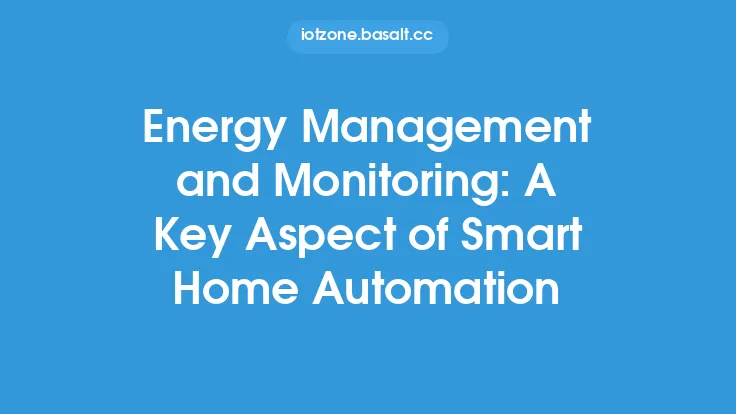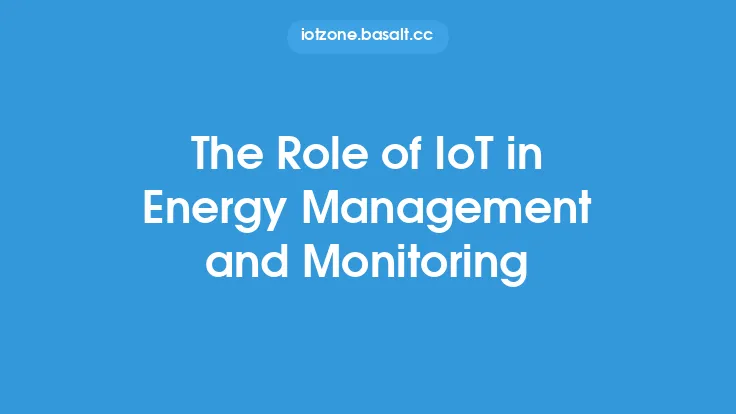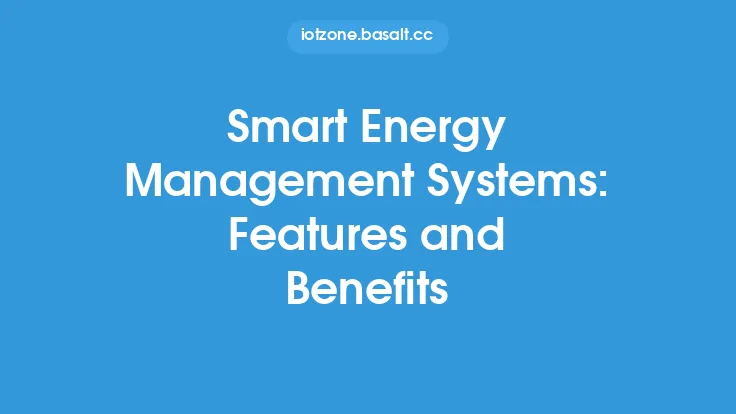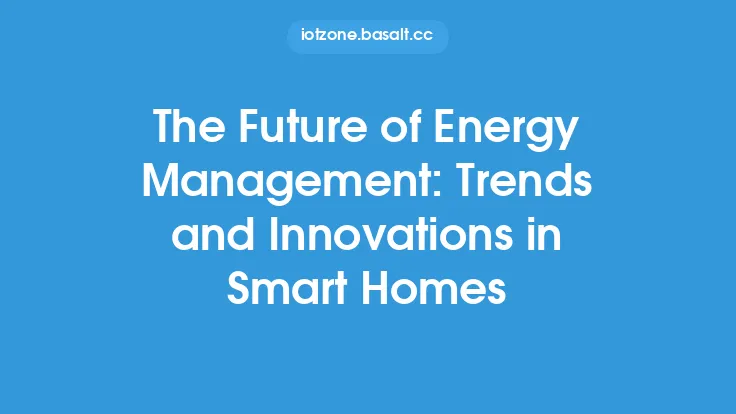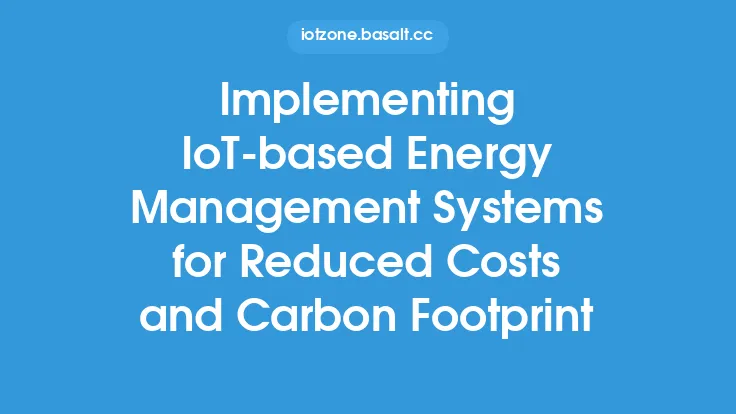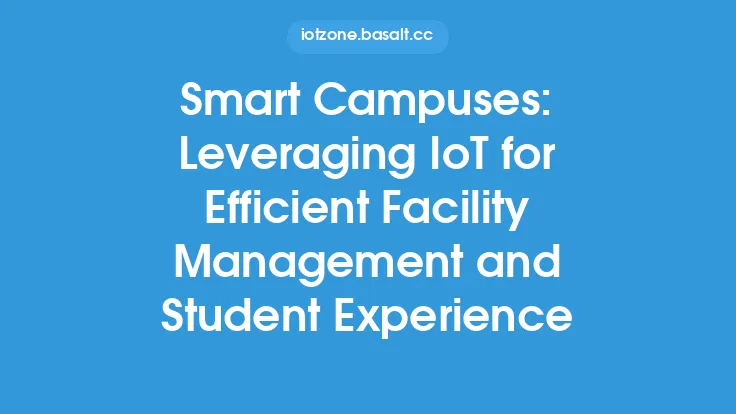The integration of Internet of Things (IoT) technology with smart grids is revolutionizing the way energy is distributed and managed. Smart grids are advanced energy distribution systems that utilize digital technologies to manage and distribute energy in a more efficient and reliable manner. The incorporation of IoT devices and sensors into these systems enables real-time monitoring and control of energy distribution, allowing for more precise management of energy resources.
Introduction to Smart Grids
Smart grids are designed to replace traditional energy distribution systems, which are often inefficient and prone to power outages. These advanced systems use digital technologies such as advanced metering infrastructure, smart appliances, and renewable energy sources to manage energy distribution. Smart grids are capable of supporting two-way communication between the utility company and the consumer, allowing for real-time monitoring and control of energy usage. This enables utilities to manage energy distribution more efficiently, reducing the likelihood of power outages and improving overall grid reliability.
Role of IoT in Smart Grids
IoT technology plays a crucial role in the development and operation of smart grids. IoT devices and sensors are used to monitor and control energy distribution in real-time, allowing utilities to respond quickly to changes in energy demand. These devices can be used to monitor energy usage, detect power outages, and predict energy demand. IoT technology also enables the integration of renewable energy sources into the grid, allowing utilities to manage energy distribution from multiple sources. The use of IoT technology in smart grids also enables the development of advanced energy management systems, which can optimize energy distribution and reduce energy waste.
Key Components of IoT-based Smart Grids
IoT-based smart grids consist of several key components, including advanced metering infrastructure, smart appliances, and IoT devices and sensors. Advanced metering infrastructure refers to the use of smart meters to measure energy usage in real-time. These meters can communicate with the utility company, allowing for real-time monitoring and control of energy usage. Smart appliances are designed to communicate with the smart grid, allowing them to be controlled remotely and optimized for energy efficiency. IoT devices and sensors are used to monitor and control energy distribution, detecting power outages and predicting energy demand.
Communication Protocols and Standards
The communication protocols and standards used in IoT-based smart grids are critical to their operation. These protocols and standards enable the secure and reliable communication of data between devices and systems. Some common communication protocols used in IoT-based smart grids include Zigbee, Wi-Fi, and cellular networks. These protocols enable the transmission of data between devices and systems, allowing for real-time monitoring and control of energy distribution. The use of standardized communication protocols also enables the integration of devices and systems from different manufacturers, allowing utilities to choose the best products for their needs.
Security Considerations
The security of IoT-based smart grids is a critical concern, as these systems are vulnerable to cyber attacks. The use of IoT devices and sensors in smart grids creates new security risks, as these devices can be used to access the grid and disrupt energy distribution. To mitigate these risks, utilities must implement robust security measures, including encryption, firewalls, and intrusion detection systems. The use of secure communication protocols and standards is also critical to preventing cyber attacks. Utilities must also ensure that their IoT devices and sensors are secure, using techniques such as secure boot and secure firmware updates.
Benefits of IoT-based Smart Grids
The benefits of IoT-based smart grids are numerous, including improved energy efficiency, reduced energy waste, and enhanced grid reliability. These systems enable utilities to manage energy distribution in real-time, reducing the likelihood of power outages and improving overall grid reliability. The use of IoT technology also enables the integration of renewable energy sources into the grid, allowing utilities to reduce their reliance on fossil fuels and lower their carbon footprint. IoT-based smart grids also enable the development of advanced energy management systems, which can optimize energy distribution and reduce energy waste.
Challenges and Limitations
Despite the benefits of IoT-based smart grids, there are several challenges and limitations to their adoption. One of the main challenges is the high upfront cost of implementing these systems, which can be a barrier to adoption for many utilities. The use of IoT technology also creates new security risks, as these devices can be used to access the grid and disrupt energy distribution. The integration of IoT devices and sensors into existing grid infrastructure can also be complex, requiring significant upgrades and modifications. Additionally, the use of IoT technology requires significant amounts of data, which can be difficult to manage and analyze.
Future Directions
The future of IoT-based smart grids is exciting, with several new technologies and innovations on the horizon. One of the most promising areas of research is the use of artificial intelligence and machine learning to optimize energy distribution and predict energy demand. The use of blockchain technology is also being explored, as it has the potential to enable secure and transparent energy trading. The integration of electric vehicles into the grid is also a key area of research, as it has the potential to enable the widespread adoption of renewable energy sources. As IoT technology continues to evolve, we can expect to see even more innovative applications in the field of energy management.
